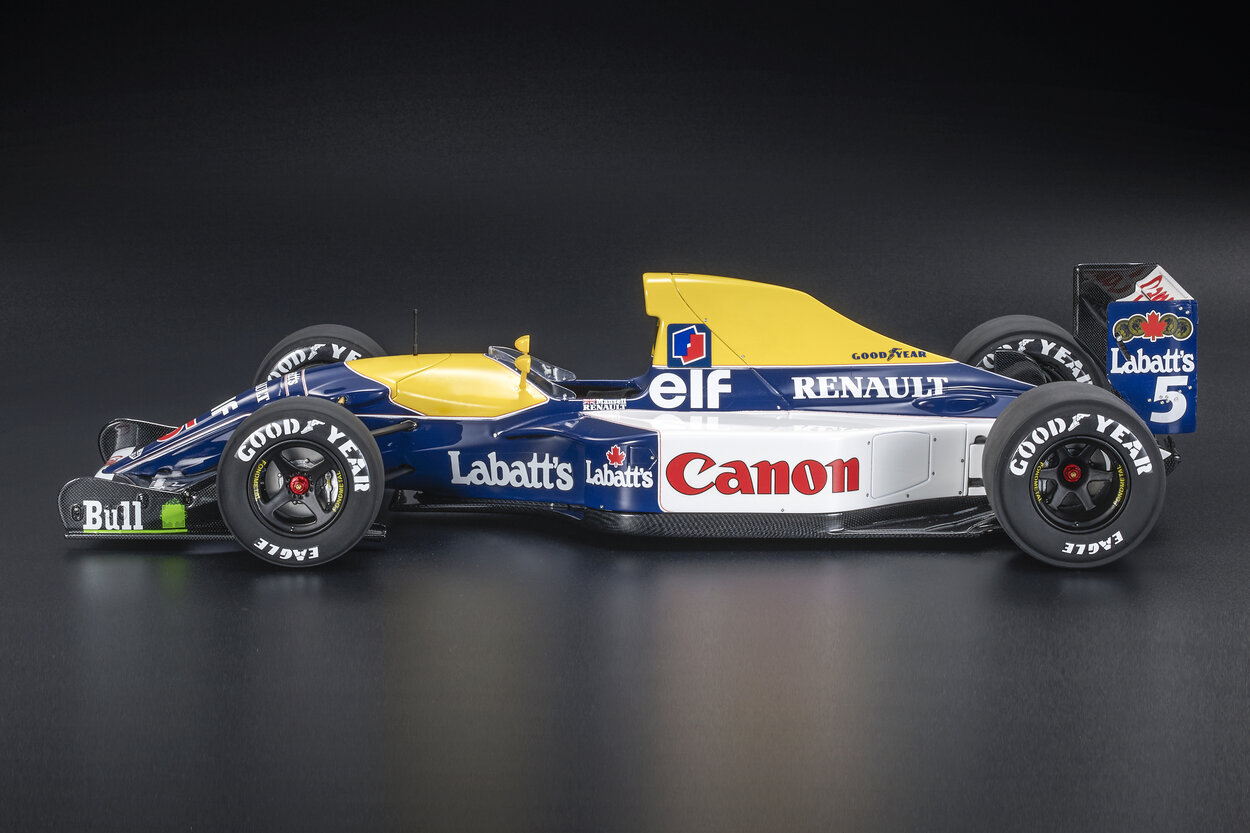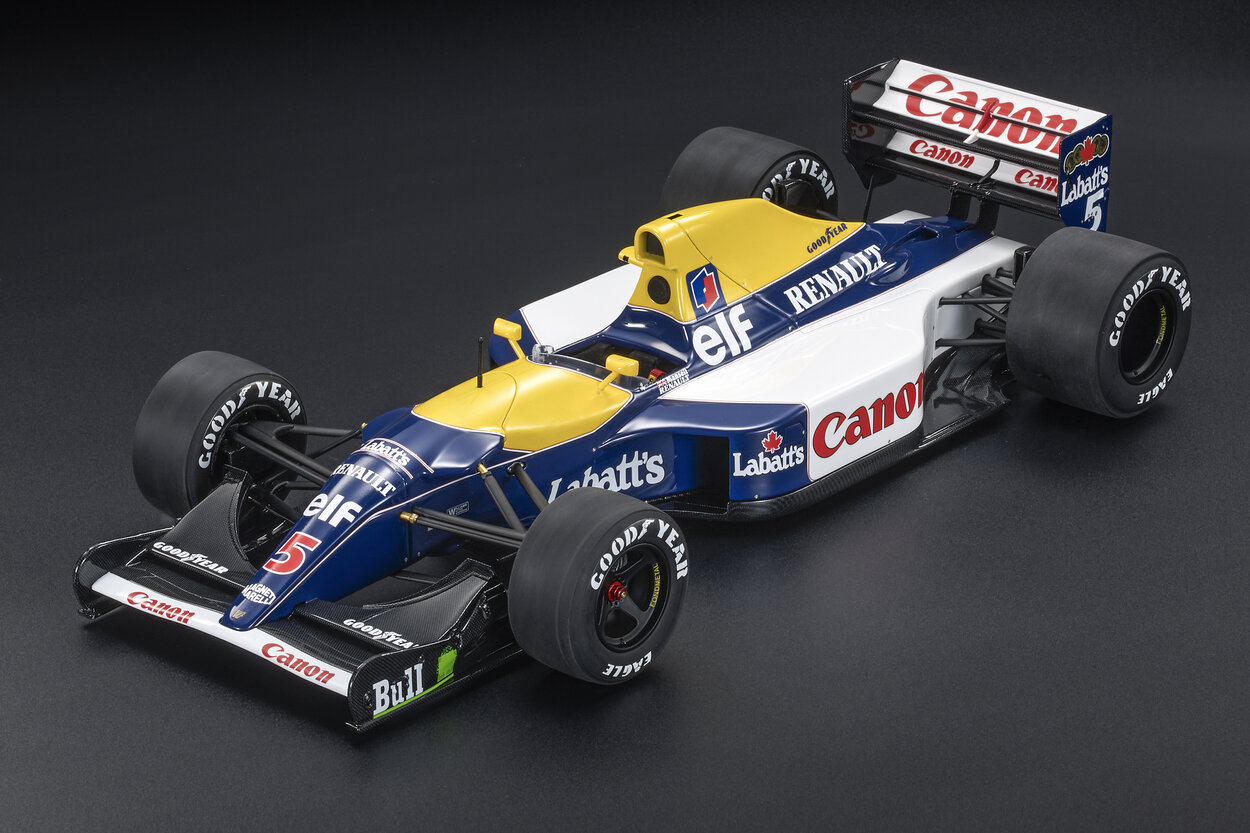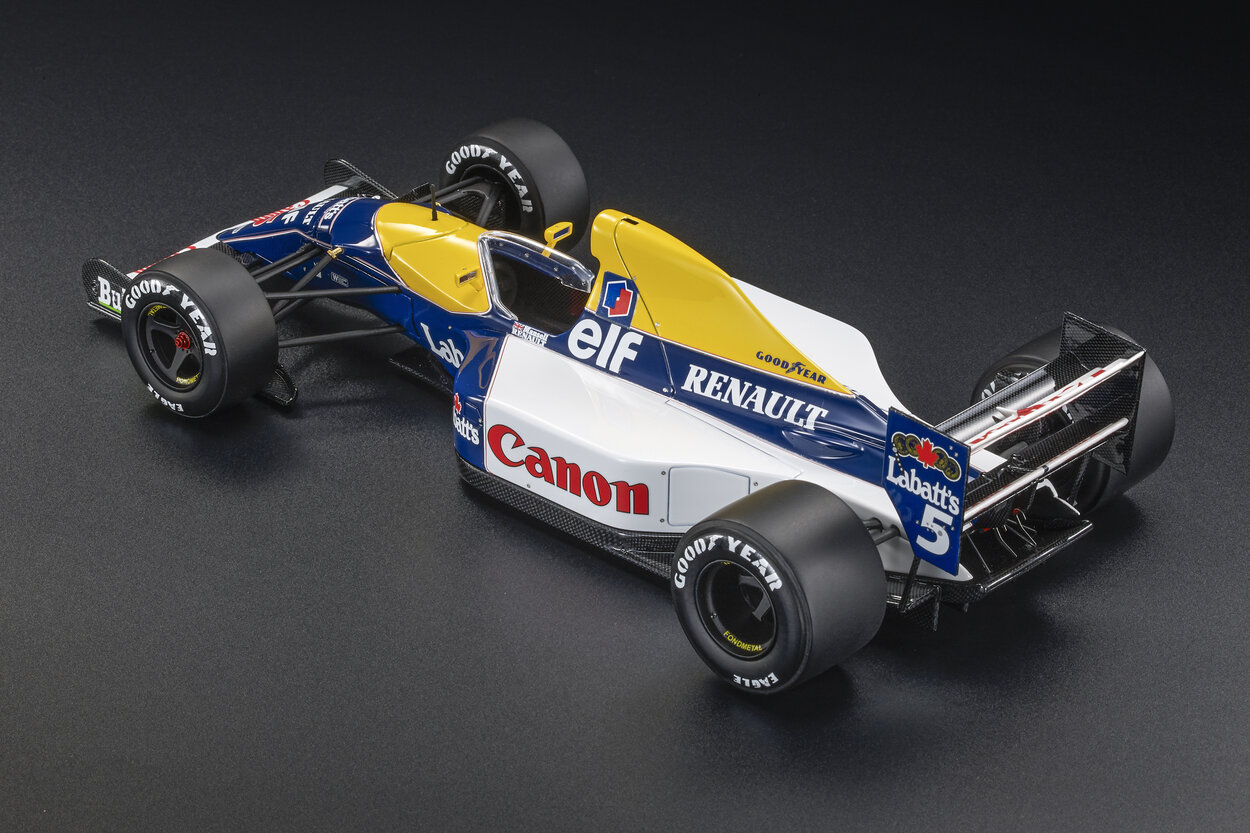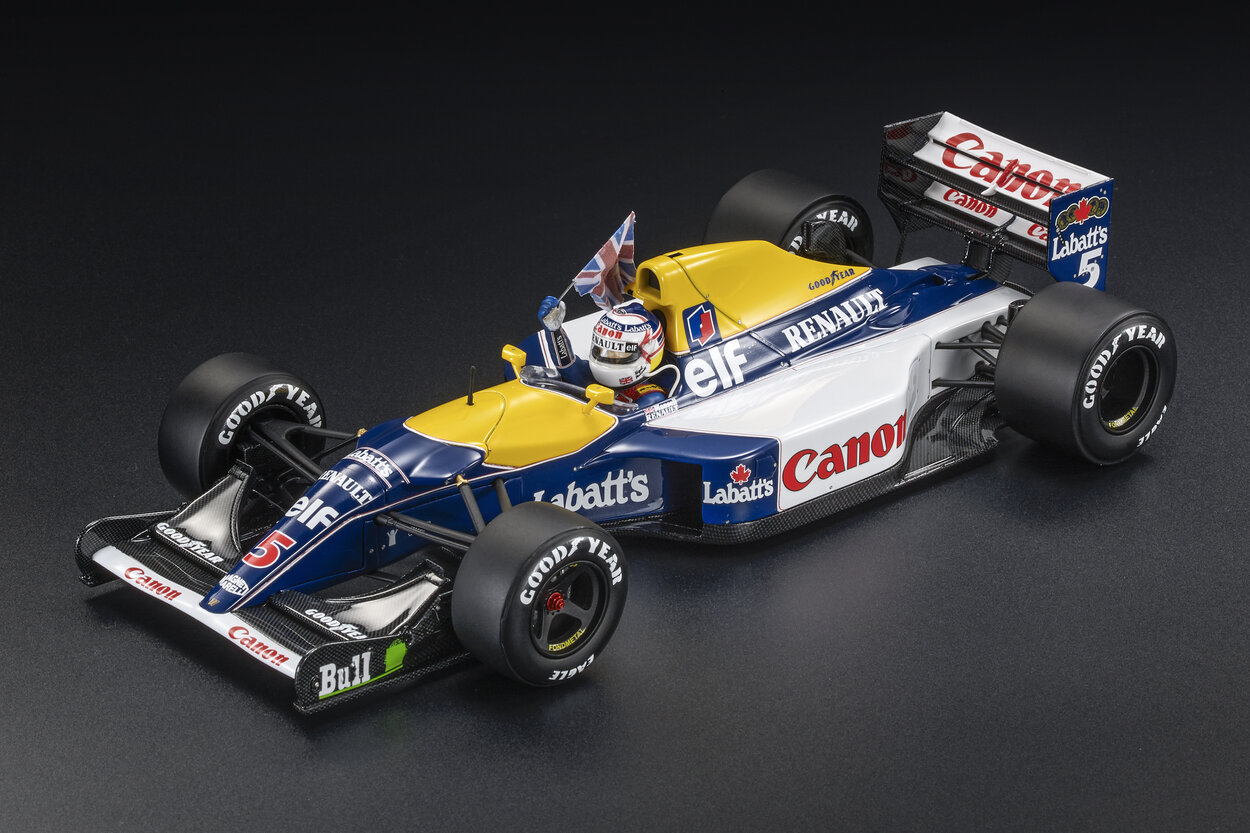Williams FW14B
The Williams FW14 is the most successful car in the team’s history. Out of a total of 32 races over two seasons, the FW14 and FW14B won seventeen Grand Prix races, achieved 38 podium finishes, secured 21 pole positions, and set 19 fastest laps in races. These numbers include one Drivers’ and Constructors’ World Championship in 1992. However, if Ayrton Senna hadn’t stood in the way of the FW14, the championship titles could have been doubled.
The development of the new car was a joint effort between Williams and Renault, which continued to supply the engines. The project was led by Adrian Newey, the Formula 1’s new genius, who joined Williams in the summer of 1990 and immediately started designing the car for the following season.

Drivers:
Nigel Mansell: His 1992 season is one for the record books. He secured a total of nine victories. The first five came consecutively in the opening five races of the year. By mid-May, the season was already decided. But the Lion had only just begun. He went on to win in France, Great Britain, Germany, and Portugal. He finished second on the podium twice. Mansell effortlessly set 14 pole positions out of 16 races. He also recorded eight fastest laps. At the end of the season, he had double the points of the second-placed driver, who happened to be his teammate.
Riccardo Patrese: Despite being overshadowed by the declared lead driver, the Italian driver experienced the most beautiful season of his already long career. He secured a victory in Suzuka and six second-place finishes in Kyalami, Mexico City, Interlagos, Imola, Magny-Cours, and Silverstone. He also achieved two third-place finishes in Monaco and Spa, one pole position in Budapest, and set three fastest laps in races. Riccardo’s 1992 season as the runner-up in the world championship is one to be remembered.
Our model cars:

The design was futuristic, with smooth lines and balanced proportions. In the B version, the car featured semi-automatic transmission, active suspension, traction control, and, for a few races, anti-lock brakes. Renault, on its part, developed a new 3.5-liter 10-cylinder engine, which was more compact and lighter than the previous model.
The project for the new Williams-Renault FW14 was shown in great secrecy to Nigel Mansell, who had recently announced his retirement from Ferrari and motorsport. Mansell reconsidered and signed with Williams. In 1991, he finished as the runner-up in the World Championship. In 1992, driving the FW14B, he finally fulfilled his lifelong dream and became the World Champion.



